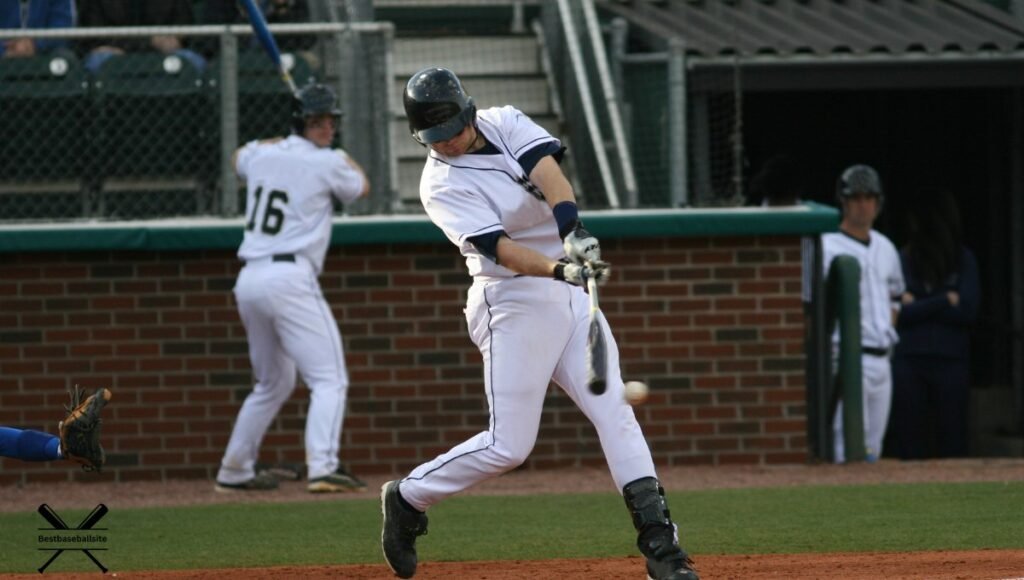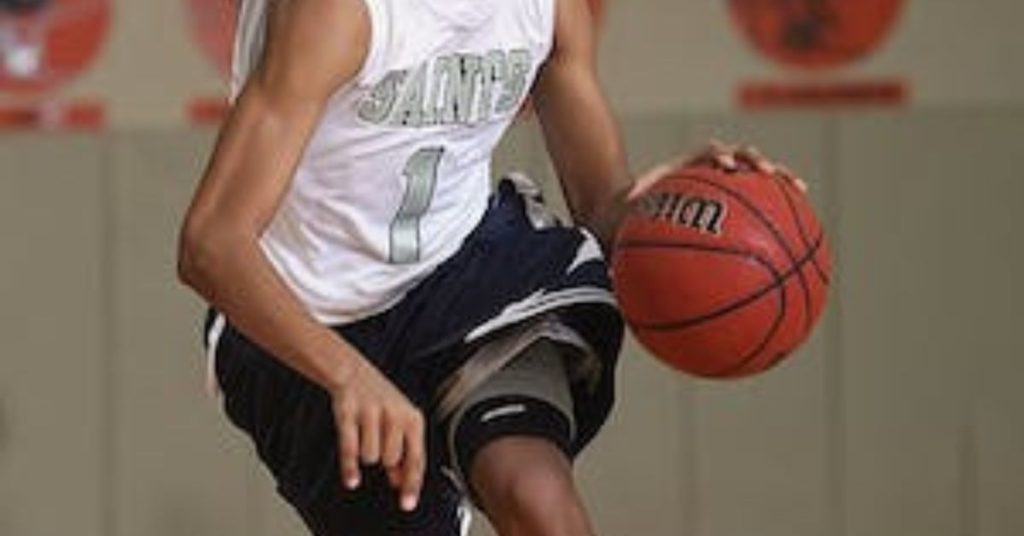To improve baseball swing timing, practice with a varied pitching machine and focus on stride timing. Engage in soft toss and tee work to refine mechanics.
Mastering the perfect baseball swing is a challenge that requires precision, practice, and patience. Every player, from amateurs to professionals, strives to enhance their swing timing for better performance at the plate. An effective swing is not just about power and speed; it’s about the synchrony of movement and the ability to anticipate and react to the pitch.
A crucial part of honing your batting skills lies in developing excellent swing timing, which can dramatically improve your contact rate and overall batting average. Through dedicated drills and a deep understanding of one’s own batting rhythm, players can make significant strides in their ability to hit the ball consistently well. By focusing on timing, players can ensure that their swing is not only powerful but also well-aligned with the incoming pitch, leading to more successful at-bats.
The Essence Of Timing In Baseball
The Essence of Timing in Baseball is critical for hitters at any level. Expert hitters know that timing is the backbone of a powerful swing. With perfect timing, even a decently executed swing can drive the ball effectively.
Key Components Of A Good Swing
A good baseball swing consists of several key components that work together harmoniously:
- Stance: Balanced and comfortable, ready to hit.
- Grip: Strong yet relaxed, for better bat control.
- Load: A small movement to gather energy before the swing.
- Stride: A well-timed step towards the pitch to initiate the swing.
- Swing path: Direct and quick to the ball, to maximize contact.
- Follow-through: Completing the swing for full power transmission.
Timing Vs. Technique: Which Matters More?
| Timing | Technique |
|---|---|
| Aligns swing with pitch arrival. | Refers to swing mechanics. |
| Essential for making contact. | Improves power and accuracy. |
| Can adjust to different pitches. | Provides consistency in swings. |
| Crucial in game situations. | Requires practice to perfect. |
Strong technique sets the foundation for a solid swing. But without correct timing, even the best technique might fail to hit the mark.

Credit: blog.tannertees.com
Decoding The Pro Hitters’ Approach
Developing an impeccable baseball swing timing is pivotal for hitters aiming to reach the professional level. Understanding how pro hitters fine-tune their swing to meet the ball with both speed and accuracy can significantly up your game. Adopting their strategies can lead toward that satisfying crack of the bat that sends the ball soaring.
Before stepping onto the plate, a focused mental state is crucial. Pro hitters often visualize successful hits, which helps program their mind for actual at-bat scenarios. They adopt a relax and react mindset, eliminating distractions, to stay sharp and responsive.
- Setting clear goals: What do you want to achieve?
- Visualizing success: Imagine hitting that perfect swing.
- Concentration drills: Practice focus exercises daily.
Physical preparation is just as important. Pro hitters stick to routines that build muscle memory and maintain flexibility. Drills and exercises that simulate the swing help in attaining a natural and efficient swing tempo.
| Drill | Focus Area |
|---|---|
| Tee work | Hand-eye coordination and swing path |
| Soft toss | Timing and rhythm |
| Batting practice | Real-time pitch adaptation |
Consistency is vital. Successful hitters repeat their physical routines to achieve optimal muscle synchronization and timing. Regular practice solidifies the muscle memory needed for that perfect swing.
- Daily stretching for agility.
- Strength training for power.
- Coordination exercises for control.
Mastering The Mechanics Of Swing
To hit a baseball consistently, a batter needs excellent swing timing. This skill combines speed, power, and precision. To master the mechanics of a swing, a batter must refine their lower body movement, hand-eye coordination, and overall swinging technique. This section delves into each element that contributes to enhancing swing timing in baseball.
The Role Of Lower Body
Legs and hips are the foundation of a powerful swing. A batter’s lower body generates force and stability during the swing. Here’s how to use the lower body to improve swing timing:
- Begin with a balanced stance: Feet should be shoulder-width apart.
- Load your weight: Shift weight to the back leg before the swing.
- Unleash the swing: Rotate hips and transfer weight to the front leg.
Fine-tuning Hand-eye Coordination
Next, a batter must sharpen their hand-eye coordination. This allows them to track the ball and time their swing perfectly. To hone this skill, consider the following:
- Practice drills: Use tee drills and soft toss to improve accuracy.
- Keep your eye on the ball: Focus on the pitch from release to contact.
- Simulate game scenarios: Replicate game-speed pitches in practice.
Drills To Enhance Swing Timing
Mastering the art of baseball swing timing is crucial for hitters at any level. Effective drills can transform an average hitter into a formidable one. Below are strategic exercises designed to enhance swing timing.
Tee Work For Solid Contact
Practicing with a batting tee lays the foundation for consistent contact. Tee work allows hitters to focus on mechanics without worrying about pitch speed or location. Key elements to include in tee work drills:
- Position the tee at various heights and distances to mimic different pitch locations.
- Concentrate on driving through the ball with a level swing.
- Work on hitting the ball to all fields: pull side, up the middle, and opposite field.
Soft Toss Drills For Rhythm
Soft toss drills help build a hitter’s rhythm and timing. This drill involves a partner gently tossing a ball into the hitter’s swing path. Key points for soft toss drills:
- Maintain a steady stance and weight distribution throughout the drill.
- Focus on timing the ball as it comes into the hitting zone.
- Practice quick decision-making skills by varying the speed and direction of the toss.
The Power Of Visualization
Mastering the right baseball swing timing is not just about physical practice. The Power of Visualization plays a crucial role. With your mind’s eye, you can enhance your swing and step up to the plate with confidence.
Imagining Success
Picture the perfect swing. Visualize the bat connecting with the ball. See it soar. Feel the grip of the bat. Hear the crowd cheer. This mental imagery conditions your brain. It improves your focus and muscle memory.
Mental Rehearsals
Just like athletes prepare physically, mental rehearsals are key. Sit quietly. Breathe. Run through each step of your swing. Do this often. You’ll notice a difference. Your body will start to act as your mind visualizes. Thus, your timing improves.
Try these visualization techniques:
- Settle down in a quiet spot before games and practices.
- Close your eyes and take slow, deep breaths to relax your body.
- Start your visualization. Imagine stepping up to home plate, raising the bat, and timing your swing perfectly with the pitch.
- Feel the sensation of making contact with the ball.
- Experience the sequence in real-time, exactly how you would want it to happen during the game.
These practices train your brain to perfect the swing timing. Before long, your game on the field mirrors what you visualize off it. Embrace the power of visualization, and watch as your baseball swing timing reaches new heights!

Credit: m.youtube.com
Technological Aids In Modern Training
Embracing technology can revolutionize the way baseball players train, especially when it comes to perfecting swing timing. Cutting-edge tools provide data-driven insights that were once impossible, transforming training routines into high-efficiency sessions. Here’s how technology takes swing analysis to a new level.
High-speed Cameras For Analysis
Capturing the intricate details of a baseball swing is crucial for improvement. High-speed cameras dissect swings frame by frame, allowing players and coaches to study mechanics in slow motion. This technology provides crystal-clear feedback on:
- Swing path and angle
- Point of contact with the ball
- Body posture throughout the swing
With this visual data, players make precise tweaks to their swing, resulting in better timing and more consistent contact with the ball.
Wearable Tech For Performance Tracking
Wearable technology is a game-changer for players aiming to perfect their timing. Devices such as smartwatches and sensor-laden wristbands track every nuance of a player’s movement. Wearable tech provides real-time data on:
| Metric | Description |
|---|---|
| Swing Speed | How fast the bat moves through the zone |
| Swing Plane | The angle of the bat relative to the ground |
| Power Generated | Force applied to the ball at impact |
Armed with this information, players can understand the physical aspects of their swing. They focus on specific metrics to sync their movements better, ensuring their timing is on point when it matters most.
The Impact Of Pitch Recognition
Pitch recognition is a critical skill for improving a baseball swing. Seeing the ball early out of the pitcher’s hand gives batters a significant advantage. Effective pitch recognition allows hitters to make quicker, more accurate decisions at the plate, leading to better swing timing and higher quality at-bats.
Studying Pitchers’ Tendencies
Understanding a pitcher’s habits and pitch selection is crucial. Hitters can anticipate specific pitches in certain counts and situations. This knowledge stems from careful observation and analysis. Create a simple table to track pitcher tendencies:
| Pitcher | Fastball% | Offspeed% | Common Counts |
|---|---|---|---|
| John Doe | 60% | 40% | 2-1, 3-2 |
| Jane Smith | 50% | 50% | 0-2, 1-2 |
By memorizing patterns, batters form a mental game plan before stepping into the box.
Reaction Time Development
Improving reaction time is integral to honing in swing timing. Practice drills sharpen responses to different pitches. Use these methods to develop quicker reflexes:
- Soft toss from different angles: Simulate various pitch paths.
- Video simulations: Study digital pitchers for pitch speed and break.
- Timing drills: Adjust to different speeds with a pitching machine.
Track your progress and make adjustments. With dedicated practice, your swing timing will align perfectly with the pitch’s arrival.
Nutritional And Physical Conditioning
To improve baseball swing timing, consider the role of nutrition and physical conditioning. Proper dietary habits and targeted exercises can enhance reaction times and develop a more powerful swing. Let’s dive into how to optimize both aspects for a significant performance boost.
Dietary Choices Affecting Reaction Time
Eating the right foods is essential for fast reflexes. Here are specific nutritional strategies:
- Consume foods rich in Omega-3 such as salmon, to improve brain function.
- Integrate lean proteins like chicken for muscle repair and recovery.
- Include complex carbohydrates like whole grains for sustained energy.
- Avoid heavy meals close to game time to prevent sluggishness.
These dietary choices help maintain sharp focus and quick response on the field.
Strength Training For A Powerful Swing
Strength training is key to boosting swing power. Work on these areas:
- Core muscles for stability and rotational strength.
- Lower body to generate force from the ground up.
- Upper body, focusing on forearms and wrists, to control the bat.
Consistent strength training translates into a more forceful and controlled swing.
Timing The Game, Not Just The Swing
Improving a baseball swing is about precision and timing. Many players focus on the mechanics of their swings but neglect the game’s rhythm. Good hitters know how to read the pitcher and anticipate the play. This skill elevates their game beyond just swing mechanics. Mastering this art means understanding more than when to swing. It includes when to steal, bunt, or take a pitch. This article dives into how players can enhance their game-time decision-making together with their swing.
Understanding Pitch Sequences
Pitchers tend to follow certain patterns or sequences. Recognizing these can give hitters a massive advantage. Here are some tips:
- Study pitchers during the game and on video.
- Identify their go-to pitches in different counts.
- Practice your timing based on anticipated pitches during batting practice.
This approach enables batters to predict the pitch and time their swing accordingly.
Adjusting To Game Situations
Every game scenario requires a unique response. Here’s what to consider:
- Adjust your stance based on the score and inning.
- Take note of the baserunners and their positions.
- Be flexible in your strategy – bunt, swing away, or hit to the opposite field.
These adjustments help you stay one step ahead of the defense.

Credit: www.amazon.com
From Practice To The Plate: Transitioning Skills
Perfecting the art of baseball swing timing goes beyond repetitive drills and static practice sessions. The real challenge lies in transferring those skills from practice to the high-pressure environment of the plate. With each game, the disparity between practice pitches and real-game scenarios can widen, making consistency and adaptability vital components of a successful athlete’s arsenal.
Maintaining Consistency
Consistency is key in developing a reliable swing. A consistent swing ensures that irrespective of the pitch type or speed, your body reacts almost instinctively. To maintain this crucial consistency, consider the following strategies:
- Establish a routine: Include specific drills that simulate game conditions.
- Use video analysis: Compare practice and game swings to iron out discrepancies.
- Stay focused: Mental preparation is as important as physical training.
- Continuous repetition: Muscle memory thrives on repetition, making it a cornerstone of consistency.
Adapting To Different Pitchers And Settings
Adapting to various pitchers and game settings can be daunting. Focus on these tactics to enhance your adaptive skills:
| Technique | Description |
|---|---|
| Study Pitchers: | Learn pitchers’ tendencies and prepare accordingly. |
| Visualize success: | Imagine hitting pitches from different throwers. |
| Adjust stance: | Tweak your stance to match the pitcher’s style. |
| On-field practice: | Practice against a variety of pitching machines. |
Mastering different settings and pitchers will boost your confidence and swing timing. Bring the same focus from your practice sessions to the plate, and you’ll be striking the ball with greater precision and power.
Frequently Asked Questions For How To Improve Baseball Swing Timing
How Can I Improve My Baseball Timing?
Improve your baseball timing with consistent practice swings and video analysis. Use a tee to perfect your swing mechanics. Engage in soft toss drills. Face live pitching regularly. Develop a rhythm by timing your load with the pitcher’s delivery.
How Can I Increase My Baseball Swing Speed?
To increase your baseball swing speed, practice with a heavier bat, focus on your hitting mechanics, strengthen your core and lower body, and work on your hand grip. Include regular flexibility exercises to improve your overall range of motion.
How Can I Improve My Baseball Swing?
Improve your baseball swing by consistently practicing with purpose. Focus on maintaining a balanced stance and a smooth, level bat path. Use video analysis to spot and correct issues, and work with a coach for personalized tips. Strength training, especially core exercises, can enhance your power.
Conclusion
Mastering your baseball swing timing isn’t an overnight feat, but with dedication and the right techniques, it’s achievable. Remember to practice regularly, use video analysis for improvement, and maintain a solid mental approach. As your coordination and muscle memory grow, so will your confidence at the plate.
Ready, set, swing to your best season yet!


